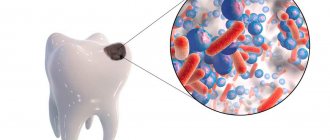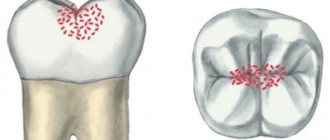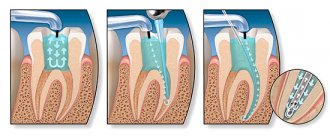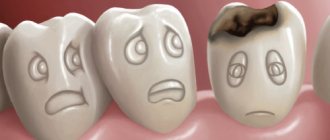Dentistry is a completely self-sufficient branch of medicine. Today dentistry is able to eliminate any problem of the dental system. Depending on the clinical situation, the patient is referred to the appropriate specialist:
- Dentist-therapist. Restoration of damaged teeth and enamel, treatment of caries, pulpitis, periodontitis, gum disease.
- Orthodontist. Bite correction.
- Orthopedist. Modern prosthetic techniques.
- Dentist-surgeon. Complex therapy requiring surgical intervention. Including implantation.
Aesthetic dentistry (restoration) is also popular, which helps to get rid of defects in teeth (chips, cracks), curvature of the dentition, damage to teeth (luxation, trauma), and pathologies of both jaws.
Brutal drills and anesthesia with side effects lasting a week are long gone. Modern methods of dental treatment are based on the use of computer technology, non-invasive therapy, professional equipment and innovative materials. This tandem allows you to carry out a complex procedure that previously took months, in just a couple of visits to the dentist. High quality and pain free.
Elimination of caries
Modern methods of caries treatment are based on non-invasive therapy, even in the most advanced cases. Often, a drill or traumatic surgical intervention is not required to remove a carious cavity.
The use of a laser is considered a revolutionary technique. The device copes well with removing damaged tooth tissue. And at the same time disinfects the treated area. For surgical operations, the laser is also indispensable, because makes neat, local cuts. This reduces the traumatic nature of the procedure and, as a consequence, the rehabilitation period.
For the treatment of caries in the initial stages, the ozone therapy procedure is effective. Ozone treatment helps get rid of any infection in the oral cavity and prevents the further spread of bacteria. Ozone is used for superficial and fissure caries. And also when the enamel darkens, when bacteria have not yet reached the dentin. The procedure is safe, painless, and is often used in pediatric dentistry.
Air blasting is also used to remove dead tooth tissue. A directed stream of fine particles helps clean the affected tooth cavity, without the use of a drill.
Treatment of caries
The standard treatment for caries is tooth filling. After localizing the carious lesion, the dentist removes the dental tissue destroyed by caries. Then it restores the integrity of the tooth by filling it. If the carious cavity is large, and the remaining tooth tissue is not able to provide support for the filling, then it becomes necessary to cover it with an artificial crown. If the carious process is deep, then it becomes necessary to remove the nerve.
Gum inflammation
Common gum diseases are gingivitis and periodontitis. In the first case, inflammation develops only in soft tissues and does not affect the dental unit. Characterized by swelling, redness and bleeding of the gums. If you do not seek dental care, gingivitis can become chronic. Or develop into periodontitis. This involves the root canals and hard tissues of the tooth. The adjacent gum peels off, and a purulent process begins in the resulting cavity. Without timely treatment of teeth, this leads to their loosening and loss.
The choice of therapeutic methods is based on the condition of the oral cavity and the severity of the pathology. As a rule, the following are used for the prevention and treatment of gum inflammation:
- Rinse procedures. After the examination, the doctor prescribes the optimal type of solution (alcohol-based antiseptics or with the addition of chlorhexidine).
- Ointments and gels (healing, anti-inflammatory, antifungal).
- Therapeutic toothpastes (anticaries, antiseptic).
- Medicines.
In most cases, soft tissue inflammation is caused by a poorly installed (polished) filling or crown. Therefore, when a disease appears, it is important not to delay visiting a doctor.
Physiotherapy (electrophoresis, darsonval, massage) is used as additional methods for treating soft tissue diseases in the oral cavity.
Common dental diseases
Basically, people suffer from the two most common dental diseases: caries and pulpitis.
Caries is a dental disease, the external manifestation of which is the destruction of the enamel and dentin of the tooth. This leads to the formation of initial damage and the appearance of a cavity in the tooth tissue. Caries occurs sequentially: first, a pigment spot (white and then yellowish) appears on the surface of the enamel. Soon it acquires a brownish color. Subsequently, the enamel is destroyed, and then the dentin. If a carious cavity is detected, you must immediately contact your dentist, otherwise further destruction of the process will lead to pulpitis. Then you will be “forced” to see a specialist by severe toothache.
Pulpitis is inflammation of the dental pulp (dental nerve). It is a soft tissue found in the tooth. Most often it develops as a result of deep caries; it can also be caused by tooth trauma - this is a breakage of part of the crown, a fracture of the tooth, a temperature or chemical factor (acid, alkali). From time to time I am bothered by non-sharp spontaneous pain, mild pain after eating hot and cold food.
Inflammation of the dental nerve and hard tissues of the tooth
The dental nerve (pulp) is located in the internal cavity of the tooth and contributes to the development and strengthening of the hard tissues of the tooth. Any impact, mechanical or due to infection, can cause inflammation of the nerve. In the acute stage, pulpitis is accompanied by severe pain in the tooth, especially at night. Chronic pathology does not have pronounced symptoms, pain syndrome appears periodically.
Therapy depends on the degree of damage to the pulp tissue. If the inflammation is minor, the dentist fixes the drug in the tooth. Until the disease is completely eliminated. The tooth is then filled. If the dental nerve is completely affected, the pulp is first removed under anesthesia. The dental treatment procedure includes cleaning and filling the canals. Then restoration of the upper, crown part of the tooth.
An advanced form of pulpitis provokes the development of periodontitis – inflammation of the upper part of the tooth root. The main symptoms are sharp pain when pressing on the tooth, swelling of the adjacent gums. It also occurs in acute and chronic stages. Therapy includes the procedure of depulpation and subsequent filling of the canals. If a cyst is present, in some cases an incision is made in the gum and the affected apex of the tooth root is resected.
Treatment of anterior teeth
Damage to the frontal zone always requires a delicate approach. Here the durability and aesthetics of the result come to the fore. Our treatment of anterior teeth is one of the most popular services. The practice uses only proven materials, intelligent equipment (with fine settings) and advanced methods for restoring shape and color.
We understand how unpleasant this situation is for you. But we insist: there is nothing to be ashamed of here - almost any defects can and should be eliminated as quickly as possible. The surest proof of our approach is the reviews of the smile zone dental clinic left by our patients, of whom we are truly proud.
Enamel destruction
Pathology is usually caused by a carious process. Bacteria in the oral cavity disrupt the acid-base balance, which changes the composition of the enamel. The cause of demineralization can be an incorrect diet when there is a deficiency of calcium, phosphorus and fluorine in the body. And also due to chronic diseases associated with inability to absorb calcium and metabolic disorders.
The destruction of the tooth surface can be stopped by a remineralization procedure. But only if the hard tissues of the tooth are not damaged. That is, caries is at the initial stage.
The dental treatment procedure includes:
- Professional cleaning, removing soft and hard plaque.
- Treatment of the surface of teeth with special compounds containing calcium (8-10%).
- Installation of a temporary mouth guard with therapeutic gel (sodium fluoride, calcium hydroxide).
The course of enamel restoration includes 7-10 sessions, depending on the condition of the teeth. The procedure takes no more than half an hour, is absolutely safe and painless.
Features of dental treatment
As you know, early diagnosis allows you to quickly get rid of various diseases. The same can be said about dentistry. The earlier dental treatment is started, the more effective it will be. In addition, the cost of dental treatment at the initial stage of the disease will be inexpensive compared to the treatment of advanced forms.
The duration of the procedures directly depends on the type of disease, the degree of its neglect, and the presence of side effects. You can find out more about this from your attending physician after a preliminary examination and receipt of research data.
For successful dental treatment, it is necessary to make a correct diagnosis. It is on this basis that the most correct exit is selected. But, nevertheless, all types of treatment begin with pain relief.
Tooth sensitivity
A painful reaction to temperature changes, or due to chemical exposure is called hyperesthesia. The cause is increased abrasion of the enamel and the presence of pathological inflammation of the soft tissues in the oral cavity.
In this case, dental treatment is based on eliminating the root cause of the disease: treating inflammation, removing low-quality or broken fillings, closing the roots of the tooth due to receding gums.
The procedure consists of daily remineralization, as well as the use of physiotherapy. Typically, it takes about two weeks for tooth enamel to restore. The patient then continues therapy at home.
When is dental treatment necessary?
Most often, a dentist is visited only when pain occurs. In this case, it will be difficult to carry out therapeutic measures. But this is better than extirpation (removal) of the tooth.
The focus of modern dentistry is to preserve the presence of all teeth in the oral cavity. This is due to the fact that each of them performs a specific function and ensures the safety of the remaining teeth.
To prevent oral diseases from developing, you should regularly visit the dentist for preventive examinations. Certain types of treatment are carried out already when the first signs of enamel damage appear.
Thus, chalky spots may appear on its surface, indicating the beginning of the development of demineralization. These are the so-called first signs of the carious process. If treatment is not started, a carious cavity will gradually form, which will require the direct intervention of a doctor.
Root canals
In dentistry, restoring the inside of a tooth is called endodontic treatment. It is required to preserve the dental unit during the treatment of deep stages of caries, as well as in the prosthetic procedure.
The therapy consists of preliminary extraction of the pulp, thorough cleaning and disinfection of the canals, followed by filling them. This is necessary to protect the resulting healthy tooth cavities from the penetration of bacteria. After filling the canals, the dentist restores the upper, crown part of the tooth.
If the inflammatory process has spread to the root of the tooth, then a drug is fixed before filling.
Innovative painkillers
Dental restoration using general anesthesia is a thing of the past. Modern anesthesia is applied locally and does not cause side effects.
The most popular option is sedation. An anesthetic in which the patient is conscious but does not feel pain during surgery. New types of anesthesia also act as a sedative to reduce patient anxiety during the procedure.
Modern types of painkillers are effective for no more than 1.5-2 hours. After which the patient returns to his normal life, without problems with health.
High-quality dental treatment at Zuub
Contact the Zuub clinic for help and change your attitude towards dentistry. We often have promotions for dental treatment; we offer decent discounts and exclusive programs to regular patients.
We treat children and adults. A strong team of specialists is your guarantee of quality results. We really want you to get rid of fear forever, so we have prepared a video about dental treatment: you will know what awaits you.
Kindness, responsiveness, and sensitivity to every patient’s wishes – these are the rules that guide our experts. Make sure that any defect can be corrected - evaluate the photos of your teeth before and after treatment with us.










